The 10 Coolest Big Data Products Of 2016

Hot Market, Cool Technology
The big data software market is in the final stages of what research firm Gartner identifies as a multi-year shift from IT-led, system-of-record reporting systems to business-led, self-service analytics. We're seeing a new generation of business intelligence and analytics platforms emerge to meet the new organizational requirements for accessibility, agility and deeper analytical insight.
The new technologies are spurring rapid growth in the big data arena: IDC forecasts that worldwide sales of big data and business analytics applications, tools and services will grow from $122 billion in 2015 to more than $187 billion in 2019 – an increase of more than 50 percent.
Here are 10 big data products that caught our attention in 2016.
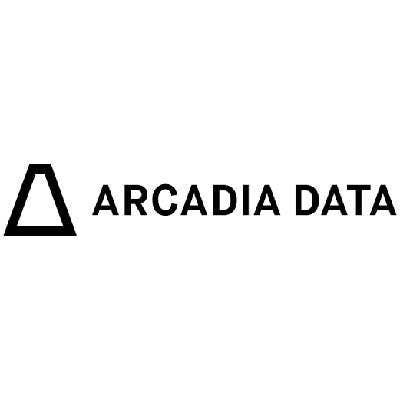
Arcadia Enterprise 3.3
Arcadia Data provides one of a new generation of business analytics tools designed to handle huge volumes of data – including data stored in Hadoop and in cloud-based systems.
In December the company launched Arcadia Enterprise 3.3, a new release of its business intelligence platform with new streaming data visualization and analysis capabilities. The enhancements mean the system can process streaming data visualizations side by side with historical data reports within integrated data applications, allowing users to switch back and forth between real-time and ad-hoc data discovery and reporting.
The new streaming data analysis capabilities will become increasingly important for providing businesses with real-time insights using data collected from Internet of Things applications.
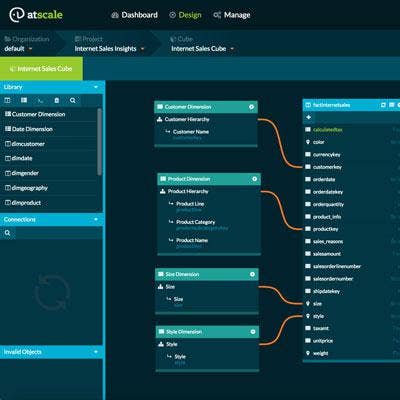
AtScale Intelligence Platform 4.0
AtScale develops software that provides a way for business users to access data in Hadoop clusters using applications and business analytics tools they already have and are familiar with, including Microsoft Excel, Tableau and QlikView.
AtScale Intelligence Platform 4.0, launched in March, offers what the company calls "hybrid query service," technology that can natively query Hadoop from any BI tool in either MDX or SQL – the two leading syntaxes for querying data in database systems.
The 4.0 edition also addresses security and data governance issues with "true delegation" technology that ensures that queries executed on Hadoop meet data governance and data access auditing policies.
In June AtScale struck a deal with Hortonworks under which the Hadoop software developer is reselling AtScale's software.
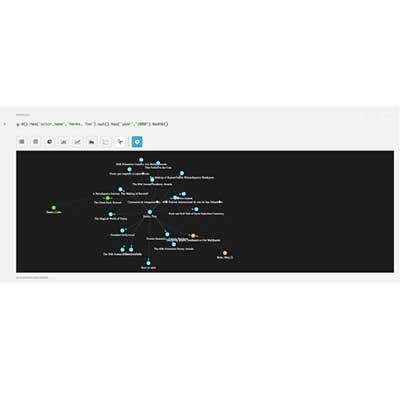
DataStax Enterprise 5.0, OpsCenter 6.0 And Enterprise Graph
DataStax is a leading player in the NoSQL database arena, providing software based on the Apache Cassandra database for cloud and data-intensive applications.
The company had a busy 2016. DataStax Enterprise (DSE) 5.0, launched in June, included advanced replication capabilities that are particularly in demand for Internet of Things and retail applications. And it included an updated version of Apache Spark for advanced search and analytics.
DSE Graph, unveiled in April and offered as an option for DSE, is a scalable real-time graph database for applications that need to manage complex data sets with many applications.
Also in June, the company debuted DataStax OpsCenter 6.0, a visual monitoring and management system for DSE that provides database monitoring, tuning, provisioning, backup and security capabilities.
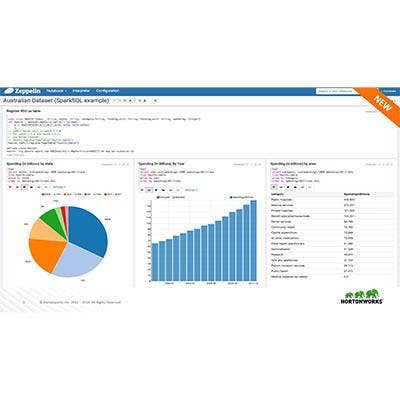
Hortonworks Data Platform 2.5
In August Hortonworks shipped Hortonworks Data Platform 2.5, the latest release of the vendor's Hadoop-based software with a broad range of enhancements spanning data science and data access, security and governance.
HDP 2.5 integrates Apache Atlas and Apache Ranger for dynamic classification-based security and data governance, while inclusion of the latest Apache Ambari technology makes it easier to install, securely configure, manage and maintain HDP.
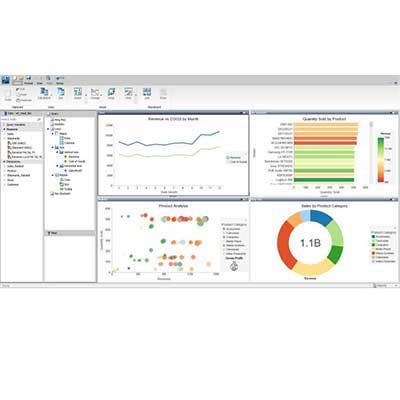
Information Builders' WebFocus Business User Edition
Information Builders' WebFocus has long been the company's flagship business intelligence product. But the enterprise edition of the software has traditionally been oriented toward IT departments and developers that provide business intelligence reports for managers and workers.
The watchword in business analytics today is "self-service," providing users with big data tools they use to discover, prepare and analyze data themselves. In June, IBI announced the general availability of WebFocus Business User Edition (BUE), which lets non-technical users easily generate and share reports, dashboards and data visualizations without assistance from IT or BI developers.
The WebFocus BUE software includes the InfoAssist+ self-service analytics authoring tool for non-technical users, the BUE Portal for managing content and assembling analytics pages, and columnar storage for high-speed data discovery.
The browser-based software, which had a limited release earlier in the year, is designed for groups of 100 users.
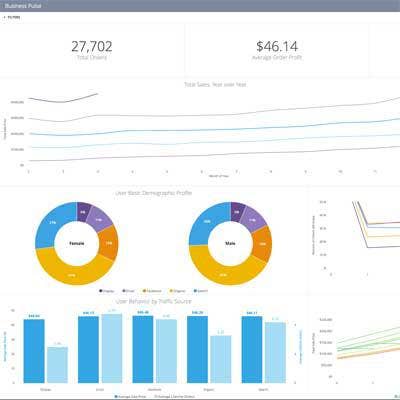
Looker 4
Looker develops a complete data analytics platform that provides analytics and exploration capabilities that integrate with departmental applications, bringing insights to the decision-making process.
Looker 4, which debuted in October, sports a full RESTful API for customizing the platform's capabilities and pushing data to wherever it's needed. With the new Actions and Webhooks functions, users can pull data, charts and analysis from any application and close the loop between analysis and acting on analytical results.
The release also includes a refreshed version of the LookML modeling language for building data metrics and a new in-browser integrated development environment. And Looker 4 has improved methods for discovering content.
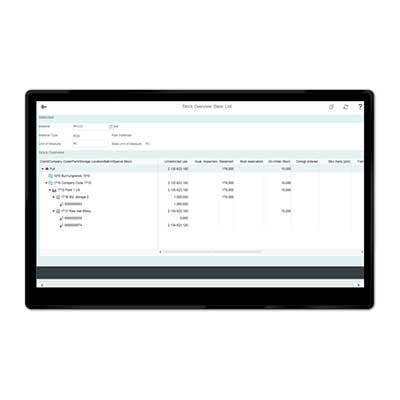
SAP BW/4HANA Edition
SAP BW/4HANA is the next generation of SAP's Business Warehouse software that is specifically developed to run on the vendor's HANA in-memory database system.
While older versions of BW ran on other vendor's databases, such as the Oracle Database and Microsoft SQL Server, the new BW/4HANA runs only on HANA – something of a gamble for SAP and evidence of how much the vendor is doubling down on HANA as a platform for all its software.
SAP said BW/4HANA fundamentally simplifies data warehouse architectures and is designed for cloud computing tasks. The software works with data that companies have stored in multiple locations, including on-premises and cloud systems, and provides a single, consolidated view of data from multiple sources.
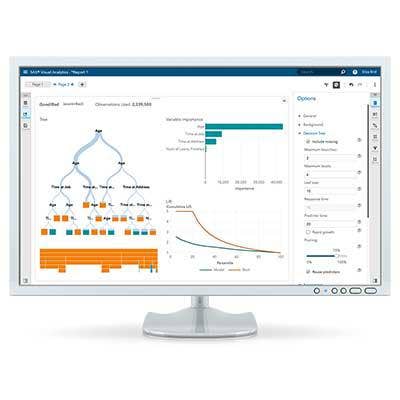
SAS Viya
Viya is a new analytics and visualization platform that can run in either private or public cloud environments. The next-generation software, which debuted in April, is SAS' first real push into the cloud and provides the foundation for SAS' future business analytics software.
The platform can be accessed using not only SAS' own programming language, but from other apps built using Python, Luya and Java, as well as supporting public RESTful APIs.
SAS is also developing versions of some of its analytical applications to run on the Viya platform including SAS Visual Analytics, SAS Visual Statistics, SAS Visual Investigator and SAS Visual Data Mining and Machine Learning.
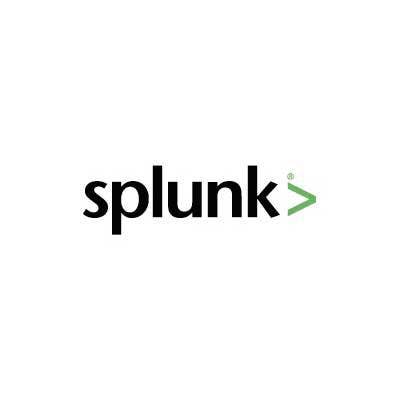
Splunk Enterprise 6.5 and Splunk Cloud 6.5
Splunk, the fast-growing developer of real-time operational intelligence software, launched Splunk Enterprise 6.5 and Splunk Cloud 6.5, new releases of its flagship product and the cloud edition, at the company's .conf2016 annual conference in September.
The new releases offer expanded capabilities in machine learning, a type of data analysis that allows a computer to adapt to new or changed data without the explicit need for new programming. With those abilities Splunk's software can better apply predictive analytics to optimize IT, security and business operations.
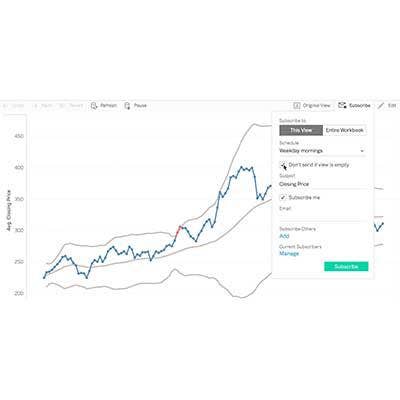
Tableau 10
Tableau is one of the most prominent and most popular business analytics tools right now, so any new release of the company's software is noteworthy.
Tableau 10 is a significantly redesigned edition of the company's flagship software with new analytical and mobile capabilities and more data preparation options. The latter includes a cross-database join feature for bringing together disparate data sources at the row level, and cross-database filtering for applying a single data filter to multiple data sources.
The release also offers a range of new features and functions to boost its appeal for enterprise deployments, including more tools for IT administrators to manage Tableau Server deployments, gain better visibility into the usage of Tableau Desktop licenses, and control user login for multi-tenant deployments. This edition also provides new APIs that developers can use to write custom applications that work with the data analysis software.